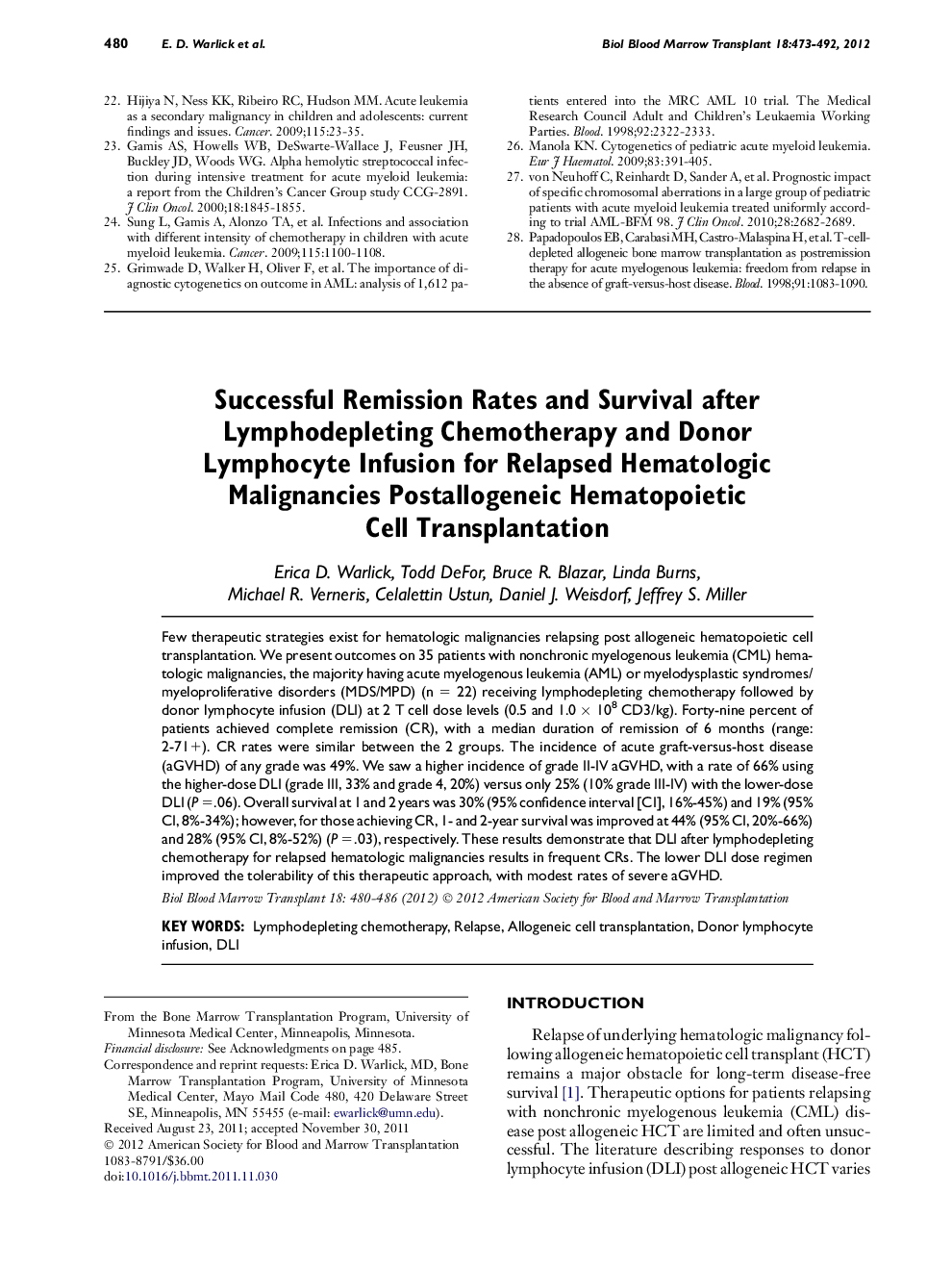| Article ID | Journal | Published Year | Pages | File Type |
|---|---|---|---|---|
| 2102675 | Biology of Blood and Marrow Transplantation | 2012 | 7 Pages |
Few therapeutic strategies exist for hematologic malignancies relapsing post allogeneic hematopoietic cell transplantation. We present outcomes on 35 patients with nonchronic myelogenous leukemia (CML) hematologic malignancies, the majority having acute myelogenous leukemia (AML) or myelodysplastic syndromes/myeloproliferative disorders (MDS/MPD) (n = 22) receiving lymphodepleting chemotherapy followed by donor lymphocyte infusion (DLI) at 2 T cell dose levels (0.5 and 1.0 × 108 CD3/kg). Forty-nine percent of patients achieved complete remission (CR), with a median duration of remission of 6 months (range: 2-71+). CR rates were similar between the 2 groups. The incidence of acute graft-versus-host disease (aGVHD) of any grade was 49%. We saw a higher incidence of grade II-IV aGVHD, with a rate of 66% using the higher-dose DLI (grade III, 33% and grade 4, 20%) versus only 25% (10% grade III-IV) with the lower-dose DLI (P = .06). Overall survival at 1 and 2 years was 30% (95% confidence interval [CI], 16%-45%) and 19% (95% CI, 8%-34%); however, for those achieving CR, 1- and 2-year survival was improved at 44% (95% CI, 20%-66%) and 28% (95% CI, 8%-52%) (P = .03), respectively. These results demonstrate that DLI after lymphodepleting chemotherapy for relapsed hematologic malignancies results in frequent CRs. The lower DLI dose regimen improved the tolerability of this therapeutic approach, with modest rates of severe aGVHD.
